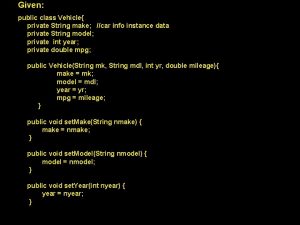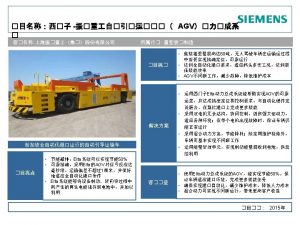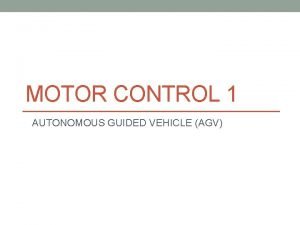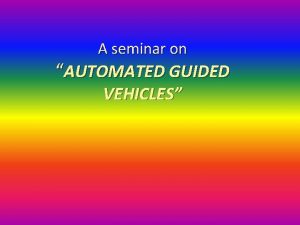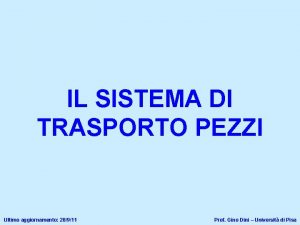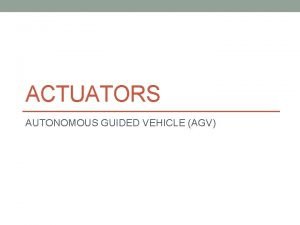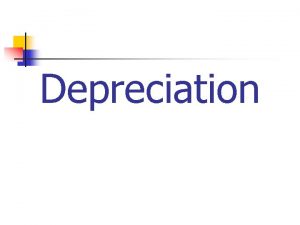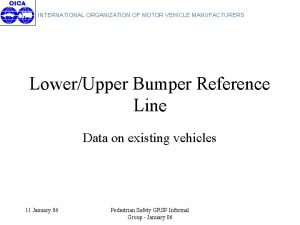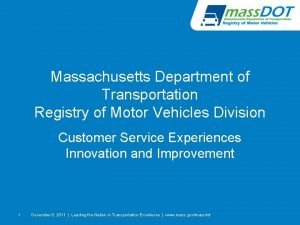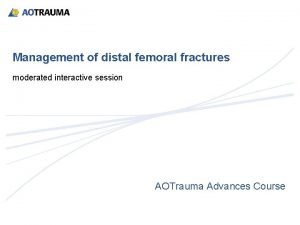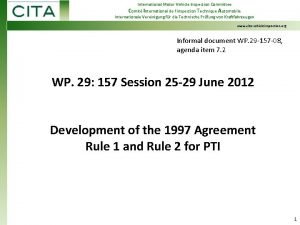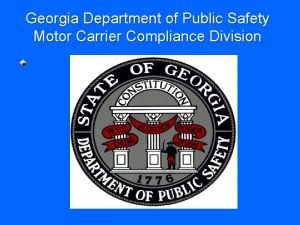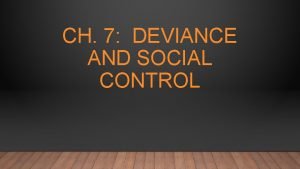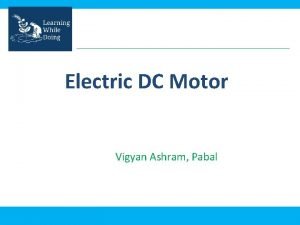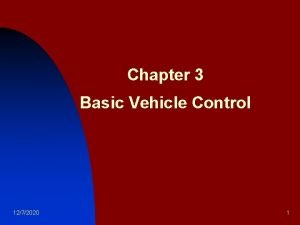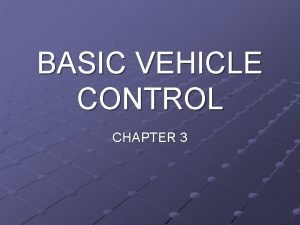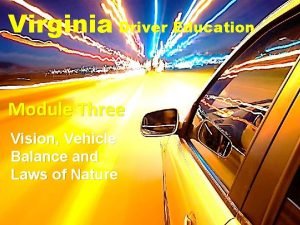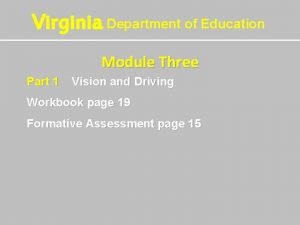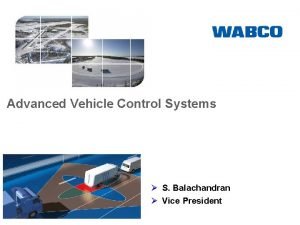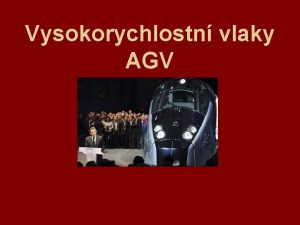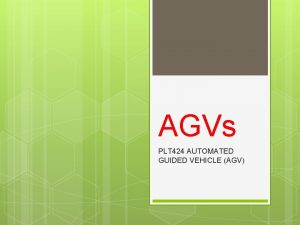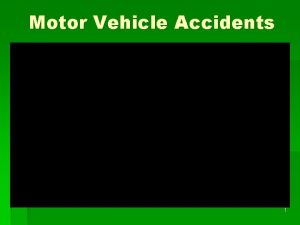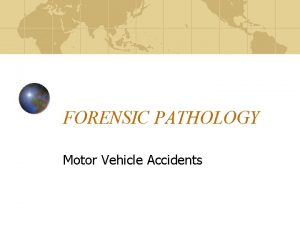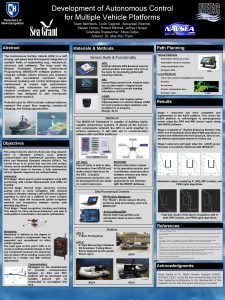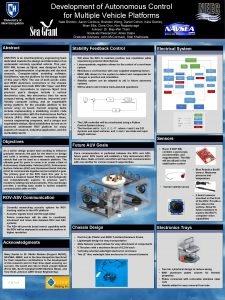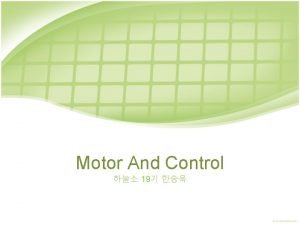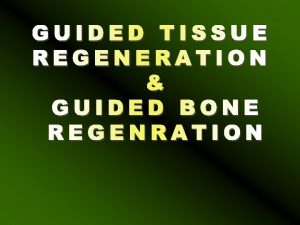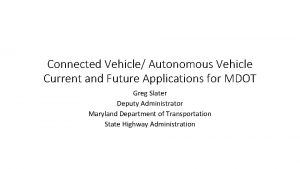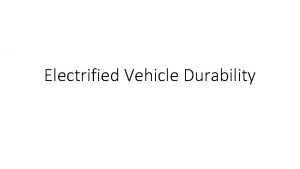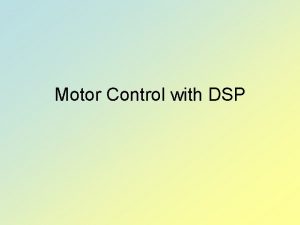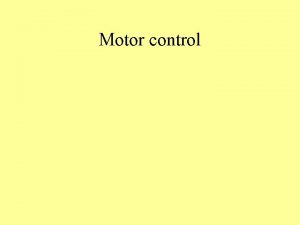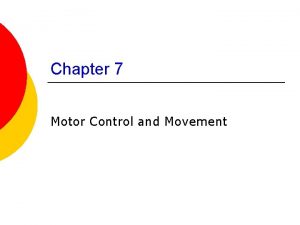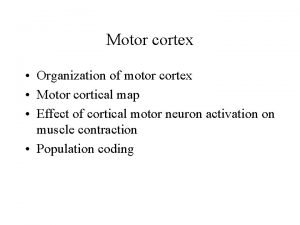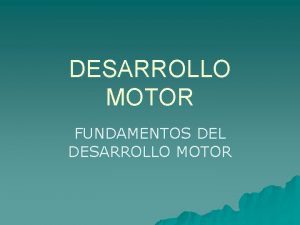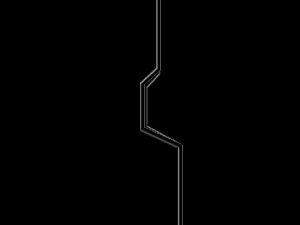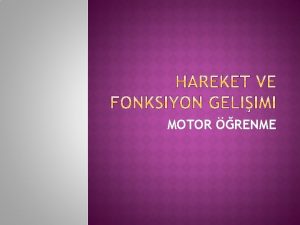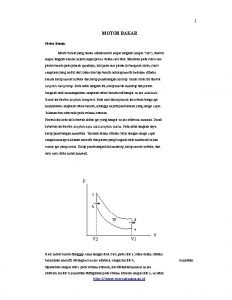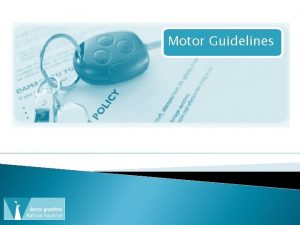MOTOR CONTROL 1 AUTONOMOUS GUIDED VEHICLE AGV Introduction






























- Slides: 30

MOTOR CONTROL 1 AUTONOMOUS GUIDED VEHICLE (AGV)

Introduction • Two basic things in motor control ØManage to drive in bidirectional ØManage to control motor speed

Relay Control • The most straight forward idea for bidirectional control is using Single Pole Double Throw (SPDT) relay

Relay Control • SPDT Act as switch Amplify or switch electrical signal & electrical power Using a relay to turn a motor on and off. The input signal is TTL/ microprocessor compatible.

Relay Control • Double pole, double- throw (DPDT) relay

Relay Control • DPDT Using a relay to control direction of a motor. The input signal is TTL/ microprocessor compatible.

Relay Control Both on/off and direction relay control in one.

Bipolar Transistor Control • When one transistor is • • switched on, the shaft turns clockwise. When the other transistor is turned on, the shaft turns counterclockwise. When both transistor are off, the motor stops turning. Notice that this setup requires a dual-polarity power supply. The schematic calls for a 6 V motor 6 V power supply source.

H-Bridge • An H bridge is an electronic circuit that enables a voltage to be applied across a load in either direction. • containing four switching element, with the load at the center, in an H-like configuration • allow DC motors to run forwards or backwards. • also be used to 'brake' the motor, where the motor comes to a sudden stop, as the motor's terminals are shorted.

H-Bridge A 1 B 2 A 2 Result 1 0 0 1 Motor moves right 0 1 1 0 Motor moves left 0 0 Motor coasts 0 1 Motor brakes 1 0 Motor brakes 1 1 0 0 Short circuit 0 0 1 1 Short circuit

H-Bridge - Relays A B C D Function 1 0 0 1 Forward 0 1 1 0 Reverse 1 1 0 0 Brake 0 0 1 1 Brake

H-Bridge - Transistor A B C D Function 1 0 0 1 Forward 0 1 1 0 Reverse 1 1 0 0 Brake 0 0 1 1 Brake

H-Bridge - Transistor (NPN) Four NPN transistor connected in an ‘H’ pattern can be used to control the direction of a motor. The power supply is a single ended.

H-Bridge - Transistor (MOSFET) • A negative potential will turn on the top P Channel FET. • A positive potential will turn on the bottom N Channel FET. • Can be used to increase the voltage flowing to the motor.

H-Bridge - Transistor (MOSFET) Basic MOSFET REVERSE FORWARD Short-Circuit

H-Bridge - ICs • SN 754410

H-Bridge - ICs • L 293 D

H-Bridge - L 293 H/D (Build in diode)

H-Bridge - L 298 D

Stepper Motor • Stepper motors are DC motors that move in discrete steps. • They have multiple coils that are organized in groups called "phases“ • By energizing each phase in sequence, the motor will rotate, one step at a time. • A unipolar stepper motor has one winding with center tap per phase. • Bipolar motors have a single winding per phase.

Stepper Motor Driver

Stepper Motor R - 1 kΩ Q 1 -Q 4 – 2 N 3055 • Example, “ADCB, A…”etc. , the rotor will rotate in one direction (forward) and by reversing the pulse sequence to “ABCD, A…” etc. , the rotor will rotate in the opposite direction (reverse).

Stepper motor rotation

Stepper motor driver – SAA 1027

Brushless DC Motor Driver (BLDC)

PWM • Pulse width modulation – chop the power being passed to it into different sized chunks • Motor will vibrate/rotate at the speed of the PWM (due to the coils being turned on and off according to the speed control) Reference : http: //www. electronicstutorials. ws/blog/pulse-width-modulation. html

Amplitude PWM • Time

PWM Pulse width Period

PWM • Higher the duty cycle, higher speed the motor rotate 12 V 0 V 20% Duty Cycle 12 V 0 V 50% Duty Cycle 12 V 0 V 80% Duty Cycle

THE END
 Public class vehicle private string name protected vehicle
Public class vehicle private string name protected vehicle Agv menyalin
Agv menyalin Zpmc agv
Zpmc agv Agv stepper motors
Agv stepper motors Agv shell
Agv shell Driverless train agv
Driverless train agv Gestione traffico agv
Gestione traffico agv Trutrackless
Trutrackless Agv stepper motors
Agv stepper motors Capital expenditures in accounting
Capital expenditures in accounting Bumper height
Bumper height Canadian motor vehicle safety standards
Canadian motor vehicle safety standards Massachusetts department of motor vehicles
Massachusetts department of motor vehicles Motor vehicle
Motor vehicle International motor vehicle inspection committee
International motor vehicle inspection committee 2020 motor vehicle deaths
2020 motor vehicle deaths Matija maksimovic
Matija maksimovic Motor carrier compliance division
Motor carrier compliance division Guided reading activity deviance and social control
Guided reading activity deviance and social control Pony motor starting method
Pony motor starting method Motor neuron
Motor neuron Synchronous motor hunting
Synchronous motor hunting Motor parts name
Motor parts name Ee 216
Ee 216 3 operational controls
3 operational controls Chapter 3 basic vehicle control
Chapter 3 basic vehicle control What is vehicle balance
What is vehicle balance Yaw drivers ed
Yaw drivers ed Advanced vehicle control
Advanced vehicle control Cognitive associative and autonomous stages of learning
Cognitive associative and autonomous stages of learning Autonomous benthic explorer
Autonomous benthic explorer
